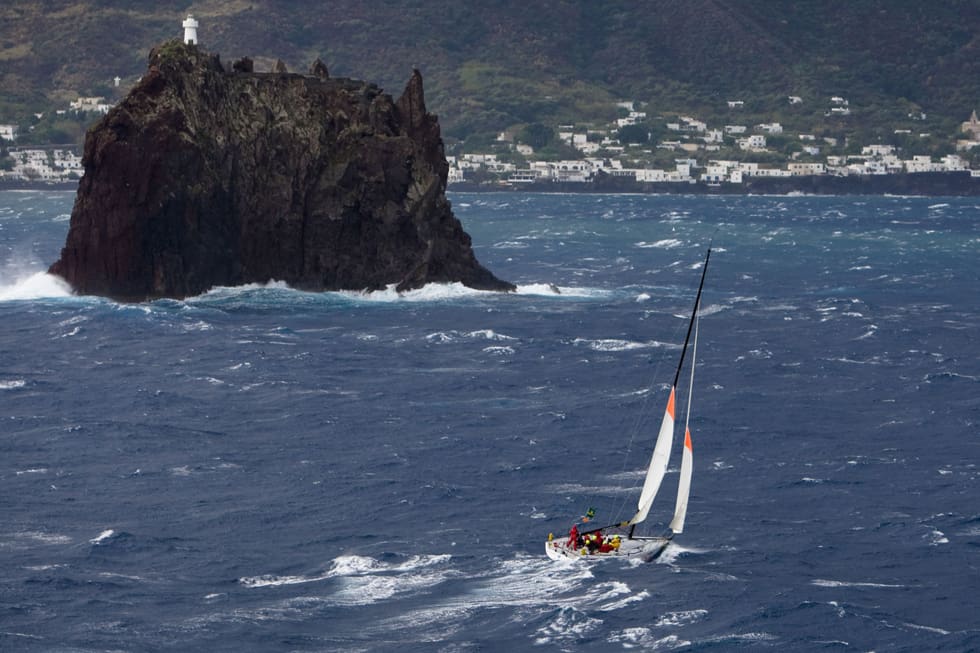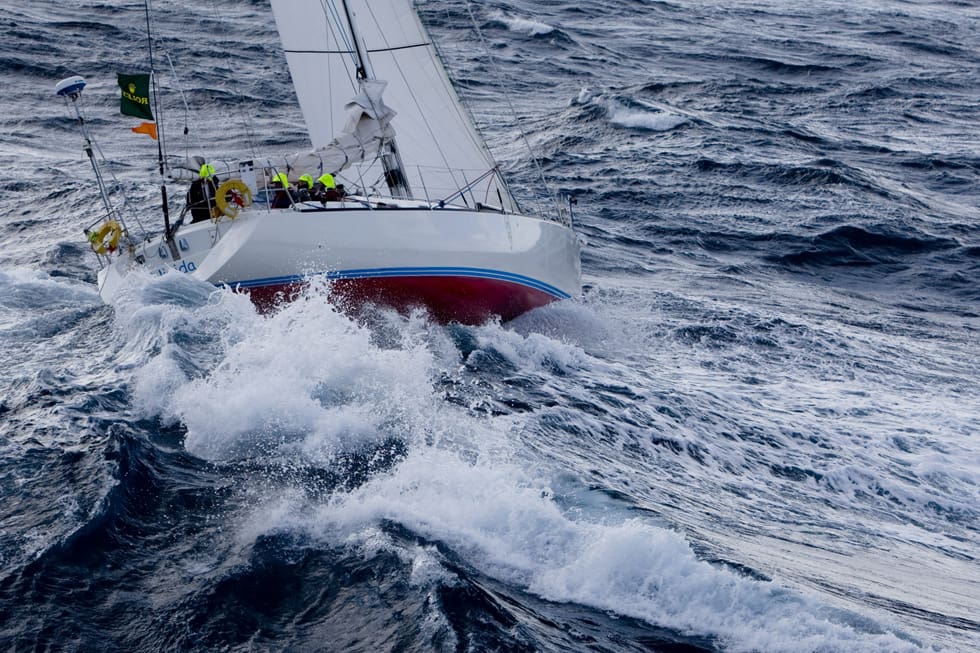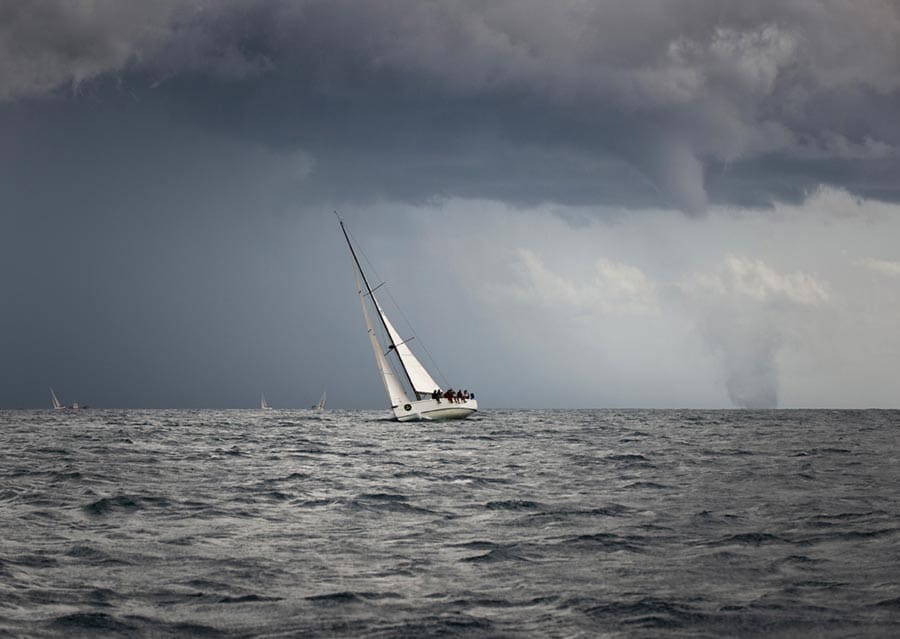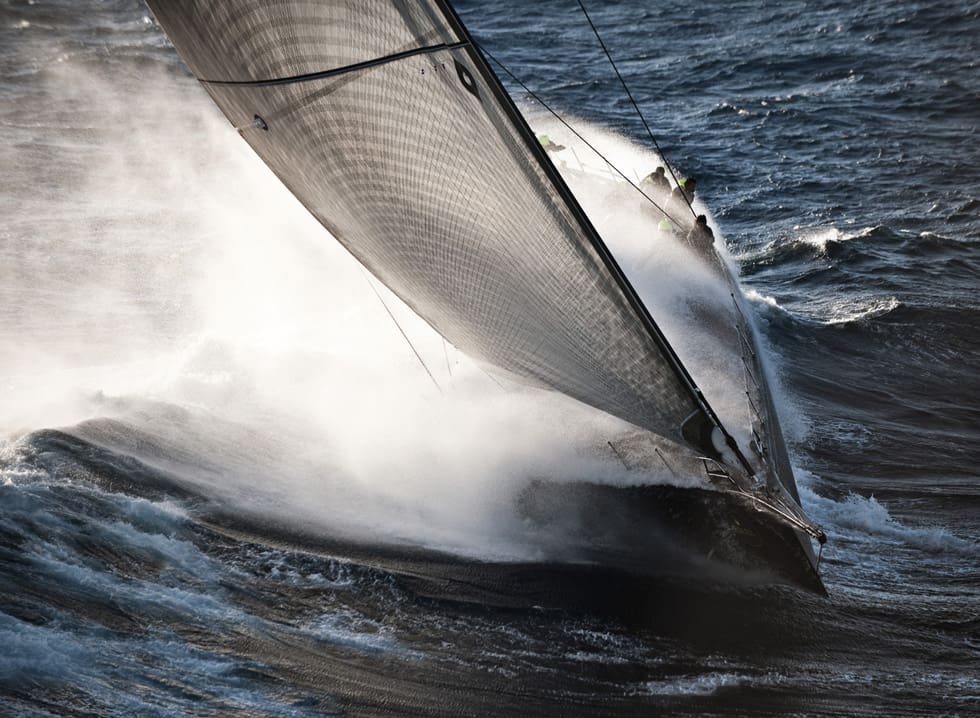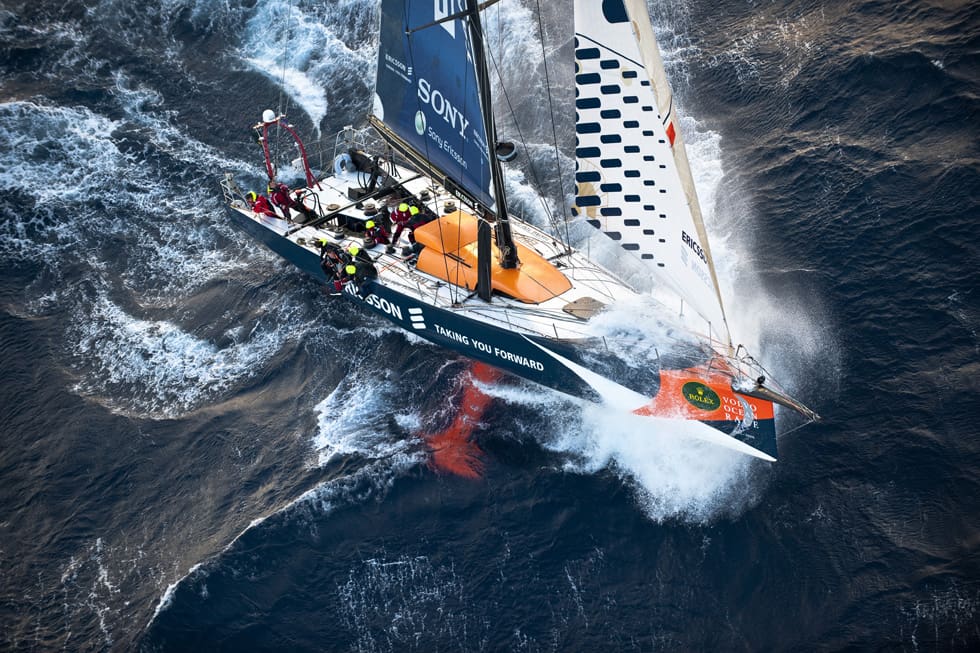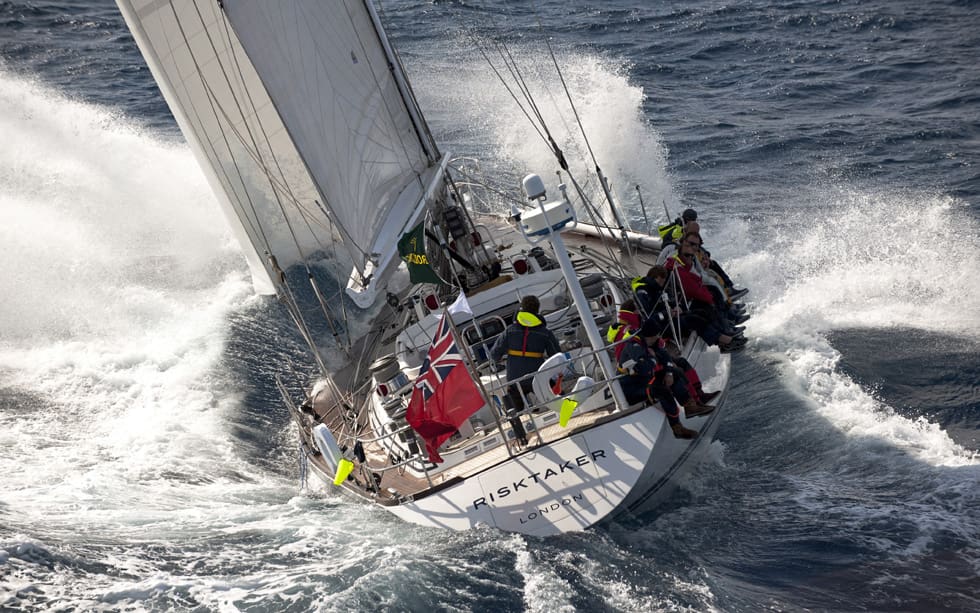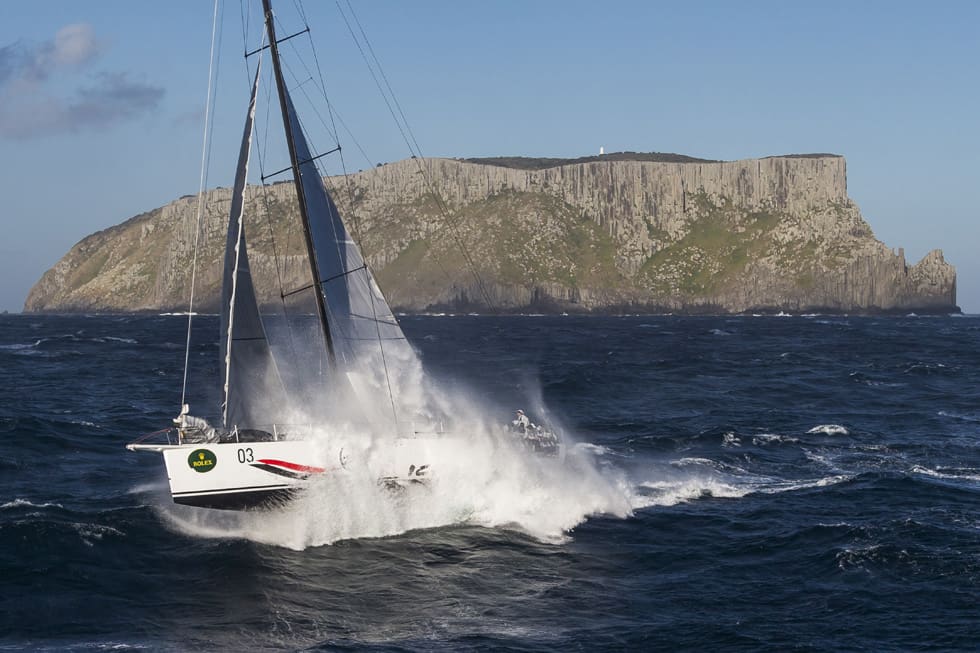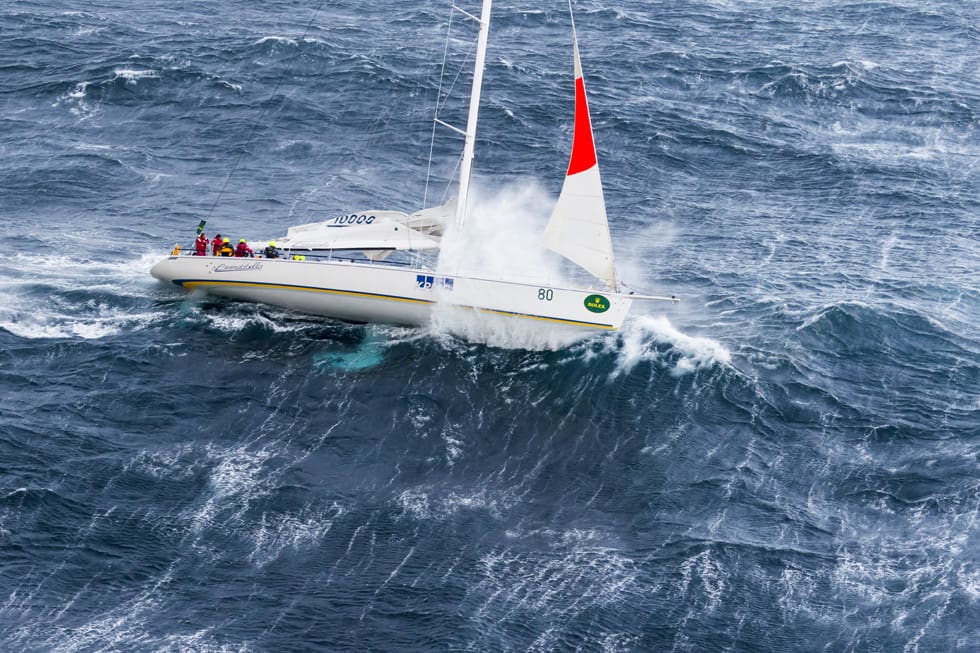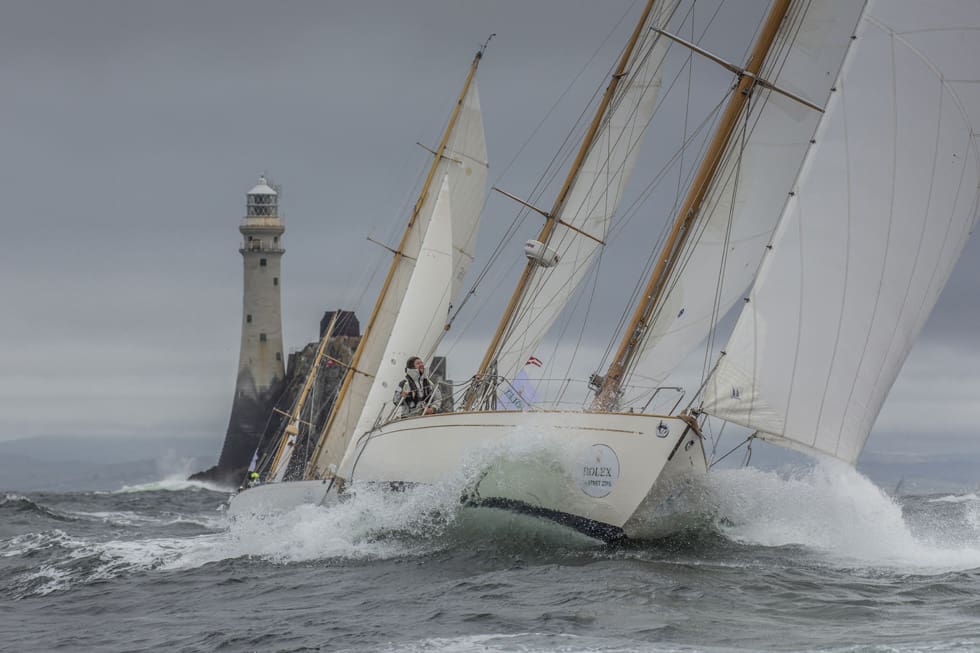The Rolex Middle Sea Race was created as the result of sporting rivalry between two British yachtsmen residing in Malta, Alan Green and Jimmy White, and two Maltese sailors, Paul and John Ripard. both members of the Royal Malta Yacht Club.
Alan (who would go on to become Secretary of the Royal Ocean Racing Club) and Jimmy proposed a longer course than was typical in the region, and one designed to offer an exciting competition in windier autumn conditions. The original suggestion was for a course that would start in Malta and finish in Syracuse, Sicily, in one year and then start in Syracuse and finish in Malta, the next.
In an inspired moment, Paul insisted that the race should be centred on the Malta, both starting and finishing there. The course was now, essentially, a clockwise circumnavigation of Sicily including Lampedusa, Pantelleria and the Egadi and Aeolian islands. It would be slightly longer than the RORC’s own famous offshore event, the Fastnet Race, sponsored by Rolex since 2001.
The Ripards presented the idea to the main committee of the RMYC, who enthusiastically backed the concept despite only six months notice to the inaugural race. Alan Green agreed to run the event on two conditions: he was given complete authority over the arrangements and that he would compete.
Malta embraced the race from the very beginning and from the top to the bottom. Malta’s then Governor-General, H.E. Sir Maurice Dorman, was also the RMYC Commodore and became one of the early supporters.
For Alan, from the outset, the race’s success was unquestionable: “The qualities, challenge and attraction of sailing the seas of classical history with spectacular scenery including two active volcanoes, the only tidal strait in the Mediterranean, and the friendly island base of Malta with its British heritage – and not least the warmth of the water in autumn – contrasted sharply with [the] experience of offshore racing in northern waters. In matching the length of the Fastnet, Bermuda, and Sydney Hobart races, I was sure we had a winning formula.”
Contributions came from all quarters. Vice-Commodore Colonel G. Z. (“Tabby”) Tabona secured saluting howitzers from the Royal Malta Artillery, Sir Hannibal Scicluna, Head of the Malta Museums Department, agreed to the use of Fort Manoel in Marsamxett Harbour, to host the start and Race Control.
The British Navy installed telephone lines and the Malta Electricity Board hooked up a power supply and lighting.
The Malta Tourism Board used its network to distribute the Notice of Race and other promotional material, and helped arrange free moorings for competitors.
Emvin Cremona, one of the country’s leading artists whose postage stamps were eye-catching and original, was commissioned via the Malta Tourist Board to produce the main trophy for the race. Cast in bronze, the trophy design powerfully and uniquely confirms the ties between sailing and Malta.
Closer to the event, the British Navy laid a trot of temporary moorings in Sliema Creek.
During the race, the British Airforce flew a reconnaissance aircraft to take daily photographs, while both British and Italian Navies engaged warships stationed in the course area to help with position reporting.
The first race attracted eight entries. Alan Green and Jimmy White competed on Sandettie, John Ripard secured a Swan 36, named Josian, and Paul raced aboard the legendary maxi yacht, Stormvogel.
The Italian Navy entered its training yacht, Stella Polare. Other entries included: the Nicholson 32 Barada, Pedlar, Yanda and Dream of Holland (which retired at Pantelleria).
While Stormvogel was first to finish, the eventual overall winner was Josian giving John Ripard and Malta a landmark opening victory.
The final prize giving was a black-tie affair, and the guest of honour was Sir Francis Chichester, fresh from his ground-breaking solo circumnavigation of the world.
In Recent Years
The race was not run for some years after 1983 until 1996 when the committee of the Royal Malta Yacht Club took a decision to re-instate the race.
In 2001, a new Committee brought new ideas into the Middle Sea Race Innovative marketing ideas were introduced and the search for a sponsor was initiated. In 2002, Rolex SA came on board as the title sponsor. Since 2002, the event has witnessed a record number of entries every year and has also seen amazing growth in the quality of entries. Although bigger boats regularly participate with new tecnological inprovements such as code zeros, canting keels and forward canards, the Course Record remained unbeaten for 7 years. One used to wonder when this will ever be broken. 64 hrs, 49 mins and 57 seconds was the time to beat…
In 2006, a record fleet of 68 yachts was on the start line, ranging from some of the largest and fastest racing monohulls on the planet, including Alfa Romeo, Morning Glory, ABN Amro 1 and Maximus, to some of the best sailed cruiser-racers around. The finish was a nailbiter, with Hasso Plattner’s Morning Glory taking in pole position amongst the larger yachts, but having to wait two days until two of the smallest boats had arrived home before the victory could be confirmed. As it was, the double-handed crew of Shaun Murphy & Ric Searle on the J-105 Slingshot and the young crew on Lee Satariano’s J-109 Artie came close, but not quite close enough finishing third and second overall respectively just over 2 hours outside the winner’s time.
The record number of participants till 2006 stood at a staggering 68 entries.
In 2007 massive storms bashed through the fleet on the northern side of Sicily. Tens of boats retired during the first night out and were forced to take shelter in various ports along the Eastern shore of Sicily. Loki also lost their rudder and had to abandon her. George David on board Rambler set a new course record of 1 day, 23 hours, 55 minutes and 3 seconds.
2008 saw a record number of entries. 78 boats started the race and was characterised by light winds in the beginning of the race and thunderstorms during the second part of the race. Thierry Bouchard, on board Spirit of Ad Hoc won in a Beneteau 40.7. He also won the ORC division, claiming the Boccale del Mediterraneo Trophy.
In 2009, Andres Soriano on board Alegre revisited Malta for the second time in a row and claimed overall handicap in IRC, thus claiming the Rolex Middle Sea Race Trophy. Line Honours went to Mike Slade on board his maxi yacht Icap Leopard. 2009 will be remembered by the large number of IMA (International Maxi Owners Association) members, including Luna Rossa, Rosebud, DSK Pioneer Investments, Icap Leopard, Bella Mente, Alegre, Beau Gest, Ericsson 2 and Intermatica (Telefonica Black).
2010 saw Icap Leopard face Esimit Europa in the race for line honours with the multi European team finishing first in the calmer weather. Lucky, a modified TP52 from the US claimed IRC overall on corrected time.
The Esimit Europa team were to win Line Honours again in 2011. The Maltese boat Artie was the overall winner of the IRC category and the Rolex Middle Sea Race Trophy.
2012 was a record year with 82 entries. The Slovenian Maxi Esimit Europa II returned to claim line Honours once again but the Rolex Middle Sea Trophy for first overall in IRC was won by the South African yacht Hi Fidelity. The overall winner in ORC was Optimum 3 Aspida from Greece.
Kristina Plattner with Morning Glory was to take line honours in 2013. The overall the winner in IRC was Michele Galli with B2 while Johann Killinger on Emma won in the ORC.
In 2014 Esimit Europa were in first to win Line Honours, whilst Maltese J/122 boat Artie was the overall winner of the IRC Category and the Rolex Middle Sea Race Trophy for the second time. The largest number of entries was 122 established in this edition.
2015 was more interesting in the fact that the fleet was more varied, consisting of different kinds of boats from the big, professionally crewed boats to smaller yachts with Corinthian sailors as well as two big multihulls, both from the United States. One of these was Lloyd Thornburg’s Phaedo3, which had only previously set a new world record in the Fastnet course, completing it in 27 hours and 34 minutes. Phaedo3 claimed multihull line honours. The other multihull was Peter Aschenbrenner’s 63’ Trimaran Paradox which recorded speeds of over 35 knots in big seas during Atlantic crossings.
2016 will be remembered as a race of multiple dimensions. Overall Winner was Vincenzo Onorato’s Italian Cookson 50 Mascalzone Latino. George David’s Rambler 88 from the United States took Monohull Line Honours for the second year in a row and Giovanni Soldini’s Italian Multi70 Maserati won the Multihull class setting a new race record in this category. In the Multihull Class all eyes were on the contest between Lloyd Thornburg’s American MOD70 Phaedo3 and Maserati. Maserati arrived in Malta with structural damage and could not use its full foiling package whilst Phaedo3 appeared to hold an advantage and confirmed this by taking the lead right from the start as Maserati took a more conservative approach to exiting Grand Harbour. Phaedo3 appeared unassailable, but a catastrophic error in navigation resulted in Phaedo3 being denied the honour of smashing their own record.
A breezy start to the race in 2017 was followed by a calm night but strong conditions were met once past the straits of Messina. Over half the fleet retired. Rambler 88 again took line honours for the third consecutive time. Bogatyr from Russia was the overall winner in the IRC category taking the Middle Sea Race Trophy. Music was first overall in the ORC category.
In 2018, a record breaking fleet embarked on the 50th anniversary Rolex Middle Sea Race with the dedication, perseverance and spirit which has come to define this famous international offshore race throughout the past five decades. 130 yachts representing 29 countries, uniting seasoned campaigners, intrepid first timers and those drawn back to Malta after decade long absences. Once again Rambler took line honours whilst Géry Trentesaux’s Courrier Recommandé etched its name on the Rolex Middle Sea Race trophy.
Maltese yacht Elusive 2, skippered by the Podesta family, and the American Maxi Rambler, owned by the record-breaking George David, took the main plaudits in the 2019 race, a race that required steadfast persistence and patience in conditions that veered from the mentally sapping benign to the physically punishing malign.
The Podesta family have been part of the fabric of the race since its beginnings in 1968. Arthur Podesta was one of seven sailors on Josian, winner of the very first edition. As a crew, Podesta would again experience success in 1970 with Tikka and in 1983 with Saudade, before becoming Commodore of the RMYC in the 1990s. When he passed away in 2015, Podesta had competed in all 35 races held to that point. Confirmation that the Podestas and their crew fully deserved their success is evident throughout, but perhaps the need to beat defending champion Courrier Recommandé, which finished second overall, is the clearest affirmation.
The 41st edition, demonstrated profoundly the human endeavour required to succeed. Great resilience was shown by all involved. The Royal Malta Yacht Club (RMYC), worked tirelessly to ensure a safe competition in the context of a global pandemic.
For understandable reasons, the number of entrants for the 2020 Rolex Middle Sea Race fell short of the record-breaking entries of recent editions. The 50 teams from 14 countries, diligently and rigorously prepared for the 606-nautical mile race, and illustrated admirably the values which underpin yachting through a display of fine seamanship in completing the complex challenge set by the course and prevailing weather.
The participants exhibited dedication and passion just to make the start line and, then, on the water provided thrilling competition which ended with last year’s overall race winner, Elusive 2, claiming a monumental back-to-back success – a rare feat in yacht racing of this kind.
It has not been achieved at the Rolex Sydney Hobart Yacht Race since 1965 and at the Rolex Fastnet Race only once since 1957. At the Rolex Middle Sea Race, the last crew to achieve this was Nello Mazzaferro’s Nita IV from Italy in 1980.
During the past five editions of the Rolex Middle Sea Race, the crew of American Maxi Rambler had dominated monohull line honours in a relentless pursuit of the race record it had set in 2007. This year’s race had no clear favourite, no obvious reference point for the frontrunners. With a few miles of the race remaining, the outcome remained in the balance. Two yachts had broken clear and, fascinatingly, both were from Poland and of similar size and design. I Love Poland, skippered by Grzegorz Baranowski, led for much of the race but on the entry to the South Comino Channel, at the north western end of Malta, her rival E1 edged ahead. Showing confidence in their ability and not losing faith in the dying embers of a gruelling race, the I Love Poland crew dug in and summoned the spirit to overhaul their determined opponent to claim line honours by a mere three minutes.
The impact of the 2020 Rolex Middle Sea Race appears significant. From the conviction of the organizers to the commitment of the participants, the desire to uphold the tradition of this international sporting event will stand it in good stead for the future. The strength of purpose exhibited will undoubtedly inspire younger sailors to follow in the wake of their heroes and to continue the legacy.
And now?
The 42nd edition of the Rolex Middle Middle Sea Race was one of the most spectacular and challenging races for many years, especially for the smaller boats. At times, during the 606 nautical mile expedition, gale force winds and tumultuous seas battered the fleet.
Jason Carroll’s MOD70 Argo was first to finish, taking multihull line honours. The American trimaran posted a time that also secured a class win under MOCRA Time correction and lowered the outright race record by an impressive 14.5 hours, finishing the 606nm race in 33 hours, 29 minutes and 28 seconds. Another course record was set by the 30.48m/100ft Maxi Comanche (CAY). Comanche achieved trifecta of overall winner, monohull line honours and a monohull race record. Comanche’s race record of 40 hours, 17 minutes and 50 seconds is based upon the full course distance of 606nm. Skippered by Mitch Booth, the exceptional crew of 23 included in its ranks the likes of Will Oxley, as navigator, Tom Slingsby, Kyle Langford, Shannon Falcone, Hugo Rocha, Justin Slattery, Willy Altadill and Luke Molloy. Victory under IRC time correction is added to the monohull line honours and monohull race record secured in a contest dominated, initially at least, by what many have described as a once in a lifetime weather system.
The 43rd edition of the Rolex Middle Sea Race will start on Saturday, 22 October 2022.
